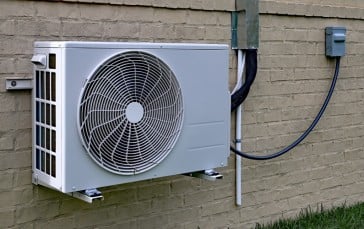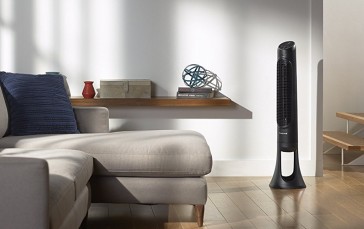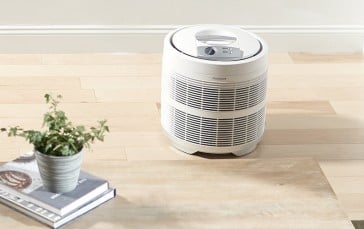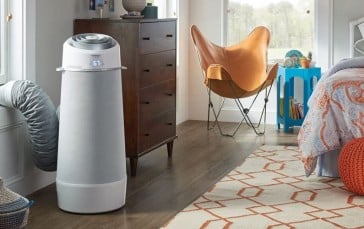Air Conditioning System Usage
As late as the mid-20th century most homes and offices sweltered during the dog days of summer. Heat and humidity made life practically unbearable to the point that some cultures adopted the practice of closing everything down during the hottest part of the day and opening back up when things cooled off a bit. (If you spend time today in places like Central America and Southeast Asia you can still see this practice in use.) Air conditioning was invented in 1908 but did not become commercially viable until several decades later and only really took off in the aftermath of World War II. But what exactly is air conditioning and how does it work?
How Air Conditioning Works
Most of us take air conditioning for granted today. When we walk through our favorite mall or enjoy a movie in the local IMAX theater we don’t give a thought to the fact that it’s air conditioning that makes those places livable. So just what is this technology that makes our lives so comfortable today and how does it work? First, what it is.
Air conditioning is a mechanical process by which air is drawn into an enclosed device where heat and humidity is removed, along with a variety of airborne pollutants. In a nutshell the process goes like this:
● Air is pulled into the unit and the pollutants filtered out.
● The air is then blown over an evaporator coil which is filled with refrigerant.
● The refrigerant absorbs heat from the air, and in doing so changes into a gas.
● This gas is pumped outside to the condenser where it releases the heat it captured.
● The condenser changes the refrigerant back to a liquid state and returns it to the evaporator coil.
● The cool dry air that results from process is then blown back into the room.
An air conditioning system should:
● Remove excessive humidity from the air.
● Maintain a level of humidity that is comfortable and stable.
● Filter out airborne pollutants.
● Supply adequate ventilation.
● Aid in keeping rooms warm during winter.
● Be affordable.
BTUs
It’s useful to note that air conditioning system power is measured in something called BTUs. BTU stands for British Thermal Unit. This is a system for measuring heating or cooling power based on an arcane formula that’s not worth getting into here. Suffice to say that a typical portable AC, window unit or split system is typically rated below 12,000 BTUs and a home central air conditioning system at anywhere from 12,000 to 60,000 BTUs, depending on the size of the house.
The Filters
Filters are an essential part of any air conditioning system and every air conditioning system needs to have its filters right up front to clean impurities from the air before that air is presented to the evaporator coil for cooling. People sometimes wonder why an air conditioning system needs a filter. After all, they seem to do little more than get clogged with gunk and constantly need cleaning or replacing. Why not just leave them out? The answer is simple: because it’s called air “conditioning” not air “cooling”. Cooling is just one way in which the air is conditioned. Removing pollutants is another, equally important part of the overall job of conditioning the air.
Without filters the air conditioner would be blowing cool air in your face that still contained pollen, mold spores, pet dander, dust, soot and a host of nasty microorganisms. By the same token if you don’t clean or replace the filters on a regular basis they’ll become overloaded with debris and you’ll still receive a face full of the above mentioned pollutants. In addition, the filter not only has your health in mind but that of the evaporator coil as well. Because if there was no way to clean the air before presenting it to the evaporator coil, the coil would become clogged with grit and grime and eventually fail.
The Ducts
When it comes to central air conditioning systems ducts are everything. (Trivia: the heavy duty tape used to seal heating and air conditioning ducts – duct tape – has become world famous as the solution to just about every problem a handyman could have.) Ducts are the galvanized steels vents that are used to transport air from the rooms to the air conditioning unit and from the unit back to the room. Without ducts central air conditioning would not be possible. The effectiveness of your central air conditioning system depends on the ducts being properly sealed and maintained. If they’re not the system will have to work harder to maintain the proper air temperature and this can lead to frequent breakdowns and a shorter system life. In addition keeping the ducts sealed tightly will allow the system to run at optimal efficiency which will keep your monthly air conditioning bills as low as possible.
Ventilation
It must be remembered that central air conditioning systems are closed systems. That is, the normal mechanisms for airing out, or ventilating, a house (open windows and doors etc) are taken out of the equation (as much as possible anyway) and control of the air supply is turned over to the system. Therefore it’s recommended that the system be able to fully process all the air in the house once every 4 hours. Any less and you’re looking at the accumulation and propagation of microbes in the air that could cause a variety of respiratory problems.

Reducing Humidity
Anyone who has spent any time watching weather forecasts on TV has heard meteorologists talk over and over about how the high humidity on summer days makes it feel like it’s even hotter out than it is. Humidity also ramps up the overall discomfort level because not only are you hot but you’re covered in sweat and everything from your clothes to the furniture is sticky and wet. (One reason places like Phoenix have attracted so many new residents in recent years is because, while the weather can be incredibly hot, it’s also low in humidity and so the effect of the heat is not so pronounced.)
One of the jobs of the air conditioning system then, as described above, is to reduce the humidity in the air to a comfortable, more or less stable level. This is true whether you use a portable air conditioner, split system, window units or have a central air system. You can see the moisture the air conditioner is removing from the air dripping out of the end of the drain pipe. The ability of the system to control humidity levels however is limited. Basically it does what it can but you’re not able to set a humidity level the way you can set the temperature. Indeed in some tropical climates the system may not, in some cases, be able to keep up with the humidity in the air. So even though the system is running at full capacity you may still feel a bit sticky.
Humidity control has been at the forefront of air conditioning research and some recent developments suggest that actual humidity control for most systems may not be far off. For the moment however, humidity control is still a blunt instrument, not a precision instrument.
Energy Efficiency
As with just about all man made systems today concerns over energy efficiency are also front and center when it comes to air conditioning. Whether you use a portable air conditioner, a split system, window units or have a central air system the process of conditioning the air can be energy intensive. While researchers do their part to create more energy efficient systems for future use there are still things you can do today to mitigate the amount of energy your current system is consuming. These include:
● Having a technician inspect and seal your ductwork.
● Making sure you clean or replace dirty filters on a regular basis.
● Closing the door when you’re cooling a single room with a window, split or portable unit.
● Turning the thermostat up 1 degree from your preferred setting.
● Making sure your central air system is on a programmable timer.
● If you use a split system make sure the outdoor condenser unit is not blocked by bushes or fallen leaves, branches or other debris.
The Importance Of Insulation
Perhaps the most important factor weighing on the efficiency of your air conditioning system – regardless of whether it’s a window unit, portable air conditioner, split system or central air system – is the insulation in your home or business. Even extremely powerful systems will be taxed to the breaking point if your walls are poorly insulated. If you really want to ramp up the efficiency of your air conditioning unit then, have an assessment made of the insulation in your home or office and make any necessary upgrades. What you spend in the short term you’ll make up for many times in the long term.
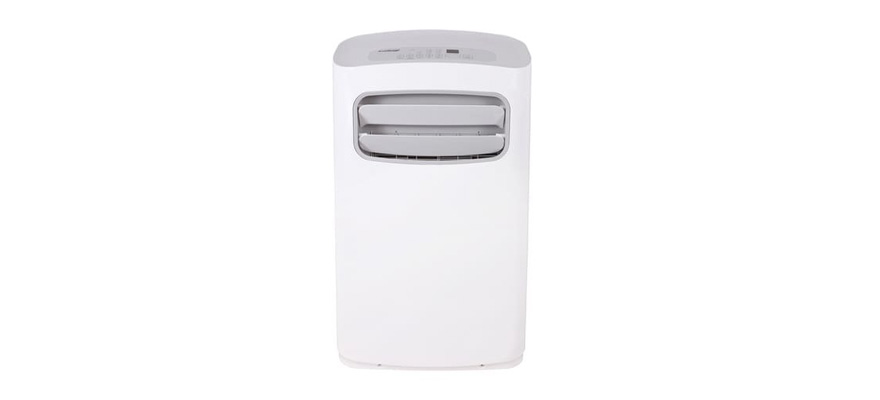
Conclusion
Air conditioning turned our great grandparents’ hot wet slog through the summer into a comfortable, easy to take experience for us. All of our lives would be measurably worse off without it.



